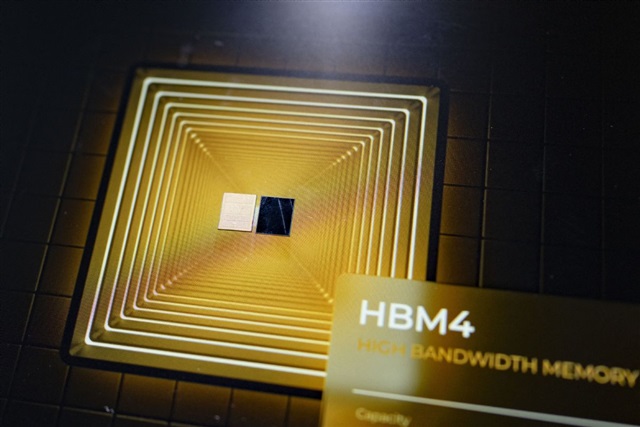Samsung Electronics is reportedly nearing a deal with Nvidia on 2026 HBM4 pricing, aiming to match SK Hynix's rates as the company accelerates capacity expansion and reorganizes its DRAM development teams to regain momentum in the premium AI memory market.
People familiar with the talks said Samsung is pushing to secure the same per-stack price that Nvidia recently agreed to with SK Hynix, which industry sources estimate is in the mid-US$500 range. A final decision is expected before year-end 2025.
Nvidia seeks dual supply as HBM4 demand surges
Nvidia invited Samsung to the negotiating table only a week after locking in 2026 supply with SK Hynix, according to Korean outlet Dealsite. The move underscores Nvidia's need for diversified sources of high-bandwidth memory as HBM4 consumption accelerates ahead of next-generation AI platforms.
SK Hynix's HBM4 price is believed to be around the mid-US$500 level, according to Seoul Economy News, more than 50% above its HBM3E 12-high pricing in the mid-US$300 range. The cost increase reflects higher production expenses, including a roughly 30% rise stemming from TSMC's manufacturing of the HBM4 base die.
Samsung, which previously offered lower pricing for its 12-high HBM3E and trailed SK Hynix by a significant margin, now sees no reason to discount HBM4. Industry sources said the company believes its HBM4 architecture delivers speed and efficiency advantages, giving it little incentive to undercut its rival.
Analysts expect Samsung and SK Hynix to end up supplying Nvidia at similar price levels.
Samsung eyes second-quarter 2026 shipments as capacity climbs
Samsung originally appeared on track to begin shipping HBM4 in late 2026 after final qualification. That timeline may now accelerate. People familiar with the matter said Nvidia's demand has grown faster than expected, opening the door for Samsung to begin deliveries as early as the second quarter of 2026.
If Samsung reaches the market in the second quarter rather than the second half, SK Hynix would lose its anticipated near-monopoly on Nvidia's first-half HBM4 supply. The competitive gap between the two companies could narrow from about six months to one quarter.
Samsung's ability to ship earlier will depend heavily on yield improvements. Industry sources cited by Seoul Economy News said the company's HBM4 built on 1c DRAM is producing yields of roughly 50%. The device integrates 1c DRAM on the memory die, and Samsung's 4-nanometer logic process on the base die, which offers performance advantages but also raises thermal-management challenges.
Massive 1c DRAM expansion to support HBM4
Samsung plans one of its largest DRAM expansions in years to support the HBM4 ramp. The company expects to allocate up to 150,000 wafers per month of 1c DRAM capacity to HBM4 by the end of 2026. This includes adding about 80,000 wafers of fresh 1c capacity and converting portions of older DRAM lines.
Current 1c output is about 20,000 wafers per month. Achieving the target would give Samsung sufficient volume to support Nvidia, break SK Hynix's dominance in the HBM4 cycle, and improve the economics of its most advanced DRAM node.
In a move reported by ZDNet Korea, Samsung has created a unified memory development organization and placed its HBM development team directly under the new DRAM design division. The changes consolidate engineering resources that were previously dispersed across multiple teams.
Hwang Sang-jun, head of DRAM development and a known leader in high-value DRAM and HBM programs, will oversee the revamped organization. The restructuring follows a period in which SK Hynix captured HBM leadership due to better yields and faster commercialization of HBM3 and HBM3E. Samsung is now concentrating its engineering talent to accelerate work on HBM4 and HBM4E.
Certification advances continue at Nvidia
Samsung delivered engineering sample (ES) units of HBM4 to Nvidia in September 2025. Results from that round of testing are expected this month, Seoul Economy News reported. If ES units pass, Samsung will move immediately to provide customer sample (CS) units, with final qualification targeted for early 2026.
Industry observers said qualification remains a critical variable for Samsung, but Nvidia's accelerating roadmaps and supply needs increase the likelihood of a faster production handoff once certification is complete.

Source: Dealsite and Samsung, compiled by DIGITIMES, November 2025
Article edited by Jerry Chen




